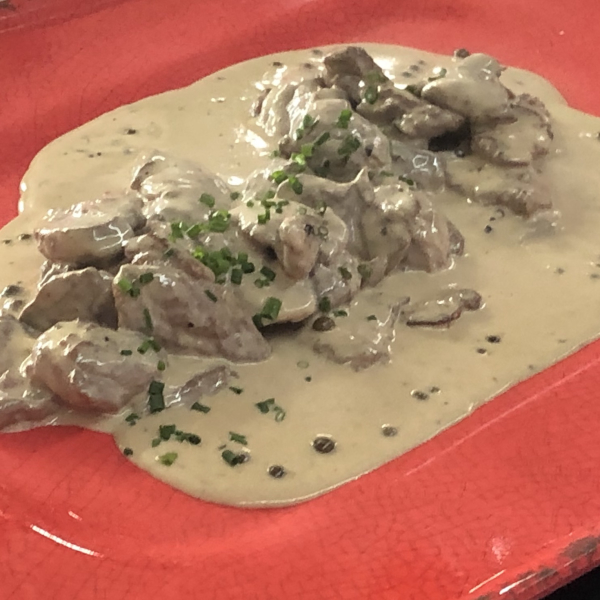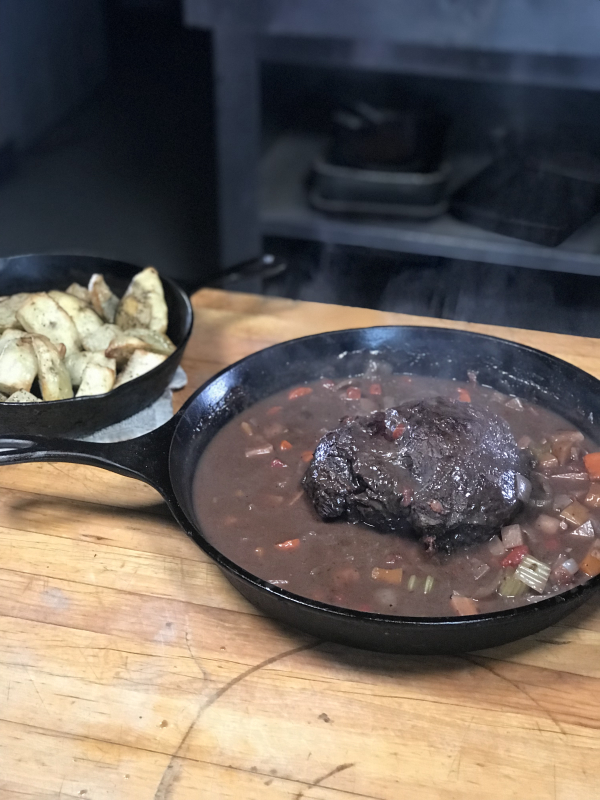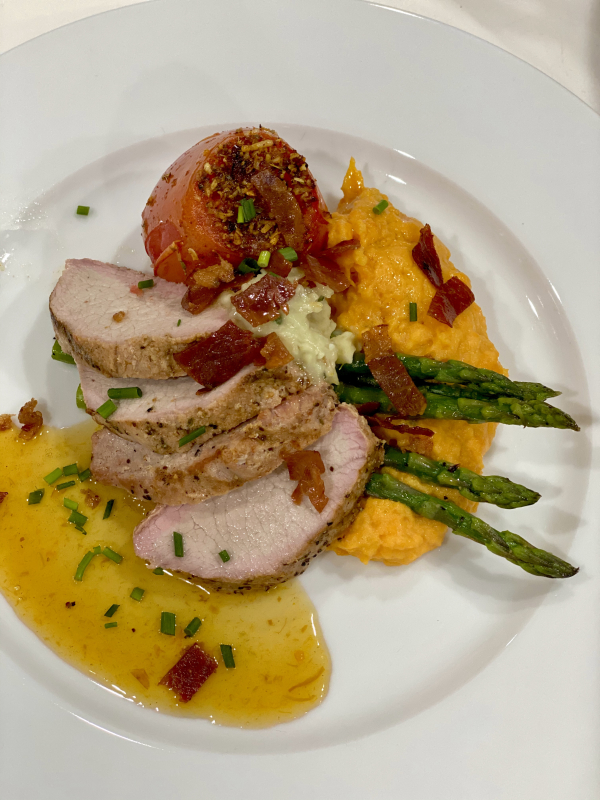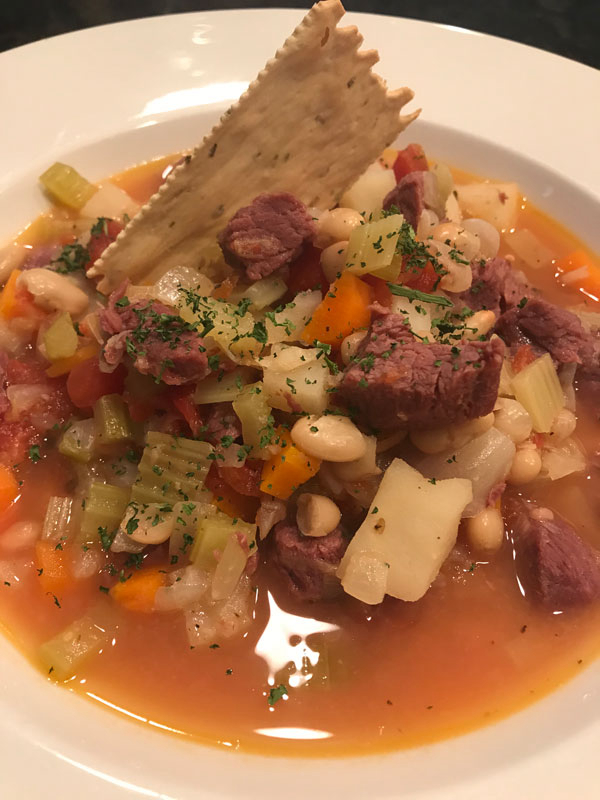
In the final segment of pro chef Albert Wutsch’s four-part series, we dive into the actual cooking of wild game to provide tasty table fair for friends and family. The chef has also provided easy-to-follow wild game recipes linked at the bottom for hunters to try out their newfound skills. Wutsch serves as the guest chef and consultant at Outdoor Solutions’ Field-to-Table culinary events. Chef Wutsch is also a culinary educator and regularly writes for publications and has published several books.

Here is an example of grilled loin of wild boar.
|
We’ve taken all the necessary steps to have quality meat at the cutting board. It’s now time to practice our cooking skills and enjoy the fruits of our hunt with family and friends.
Each cooking method has specific steps, procedures, and techniques needed to end in a tasty tender dish. I am going to identify these steps of four cooking methods, sauté, grill, braise, and stew. Sauté, and grilling are dry cooking methods used for tender cuts of meat. Braising and stewing are combination cooking methods used for less tender cuts. Professional chefs write recipes using one word for the cooking method as an example, Sauté or Braise. Chefs are expected to understand and know all the critical steps of each cooking method, and that is why they attend culinary school and or apprentice for years.
 Here is an example of elk shoulder pot roast.
|
I sauté beef, veal, venison or pheasant the same. When I sauté in Montana, I sauté the same as I do in Texas. The key steps stay consistent no matter where or what you are cooking. So, it is easy to substitute different meats and create recipes with different ingredients while the methods remain the same. The tools and product change somewhat, but the outcome should be consistent – a high quality, tender, flavorful, dish for all to enjoy.
These are descriptions of four cooking methods that are used in the recipes linked below.
Sauté
Why choose this cooking method? Sauté is a fast cooking method used for tender cuts such as strips of meat, medallions, cutlets, or chops. Sauté means “to jump.” There is a lot of action/movement, and the recipes can be simple or very elegant. The objective of this cooking method is to make the sauce from the brown particles and drippings stuck to the bottom of the pan (known as fond). When you picture the finished dish in your mind, you should have a pretty good idea of what it’s going to look like-meat smothered in sauce. The most common mistake cooks make is to overcook a tender cut of meat.
Grill

Here is an example of venison and ham white-bean stew.
|
The desired finished grilled dish would be a tender cut with charred thatch marks for presentation and flavor. The sauce, glaze, compound butter, etc., will be made elsewhere and served as accompaniment and or glaze to enhance color and flavor. Most importantly, do not overcook a tender cut of meat. Do not place sauce or garnish on top of the grilled or broiled meat hiding the colorful, flavorful thatch markings. Grilling and broiling are the same – the only difference is that the heat source for grilling comes from below, and the heat source comes from above while broiling. Grilling, as all cooking methods, is an art. You are utilizing your sight, smell, touch, and listening to the action, and of course, taste. I never use a thermometer to test doneness. This cooking method is less logic and more feeling. That’s probably one reason why most hunters that like to cook, like the thrill of the grill. If you go out to eat in an upscale steak house, you will find a statement usually on the bottom of the menu, saying, “We are not responsible for well-done steaks.” That’s because, if you overcook a tender cut, you make it dry and chewy.
Braise
Braising is a combination cooking method used for less tender cuts of meat. The finished dish is going to be served well done, fork-tender, smothered in sauce and served in a bowl. There is no need for a thermometer when braising because the meat is going to fall off the fork when done. Braising is usually portion size or more substantial cuts of meat. There are brown and white braises. Brown would be pot roast, and white would be fricassee. Braising starts by browning and caramelizing the meat, then adding liquid (thus the combination cooking method dry and moist) before finishing in the oven. Keep the cooked meat in the sauce to prevent evaporative cooling, which results when a large cut of meat loses moisture by evaporation. Many times, the sauce needs thickness and flavor adjustments before serving as well as removing excess fat that has rendered from the meat while cooking.
Stew
Stewing is also a combination cooking method used for less tender cuts of meat served in a bowl. Stewing usually features a portion size of smaller cuts of meat. There are brown and white stews. Brown is also known as Ragout, and a white stew is called a Blanquette. Stewing is completed in a deep pot, has more liquid than braising, and is cooked uncovered on the stovetop.
So, let’s get to the meat of things. There are four recipes that I’ve used for demonstrations at sports shows, cooked in hunting camp, and of course, at home entertaining our friends and family. You will find more in-depth cooking directions with a focus on the critical steps of each cooking method.
With each linked recipe, there are suggested drink pairings from professional friends that own and or manger breweries, distilleries, and wineries. Zach Morrow from Nobel Stein Brewery in Indiana, Pennsylvania, www.noblesteinbrewingcompany.com and Brandon Bownds from Horn Winery in Hye, Texas, have provided some excellent choices to complement each game dishes.
To learn more about Outdoor Solutions’ Field-to-Table Events or their other services, please visit www.fromfieldtotable.com.
Good Cooking, Chef Wutsch